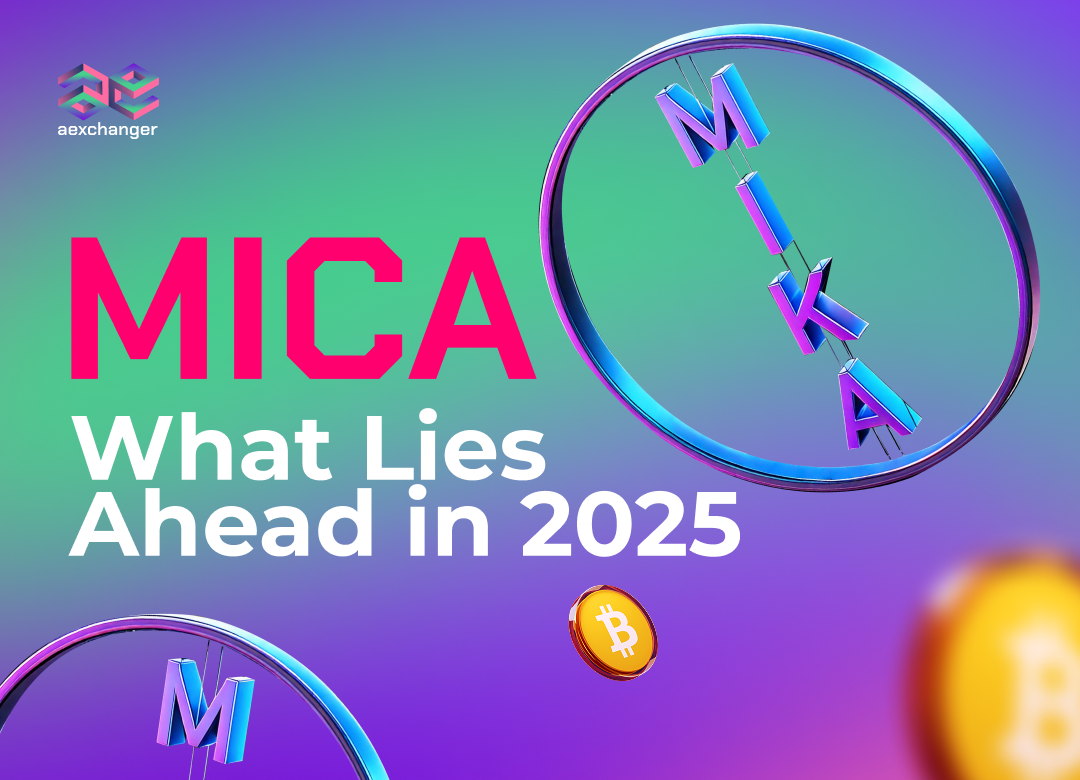2025-02-19 16:48:11
MiCA and Crypto Market: What Lies Ahead in 2025

The Markets in Crypto-Assets (MiCA) regulation marks a major step toward comprehensive crypto oversight in the European Union. Designed to create a clear legal framework, MiCA aims to enhance investor protection, ensure market stability, and regulate crypto-related activities.
These regulations, set to take full effect in 2025, will reshape the industry, impacting exchanges, stablecoins, and crypto service providers. But what does this mean for the future of crypto? This article explores how MiCA will influence the crypto market in 2025 and beyond.
Crucial Components of MiCA
MiCA introduces several significant measures to strengthen the crypto market. It mandates that companies operating in the crypto sector must register and comply with strict regulatory standards before offering their services.
The European Securities and Markets Authority (ESMA) will oversee the enforcement of these rules, ensuring market participants adhere to transparency and fairness principles.
Additionally, MiCA establishes a regulatory framework for emerging cryptocurrencies, promoting accountability and clear operational guidelines. The legislation also focuses on preventing fraud and financial crimes, aiming to create a secure environment for businesses and investors.
By bringing greater regulatory clarity to the EU crypto-asset market, MiCA is paving the way for more structured and trustworthy investment opportunities.
Influence of MiCA on Crypto Businesses
The introduction of MiCA regulations will significantly affect companies operating in the cryptocurrency sector. Businesses seeking to enter the EU market must comply with newly enforced anti-money laundering (AML) laws and adhere to stricter regulatory requirements.
This involves obtaining official authorization from regulatory bodies and meeting specific operational standards.
With the European Securities and Markets Authority (ESMA) overseeing enforcement, these regulations aim to enhance the credibility and legitimacy of the crypto industry. While some companies may face challenges in scaling their operations, MiCA provides long-term regulatory clarity, fostering a more stable environment that could attract additional investors.
In 2024, MiCA marked a significant milestone in the formal recognition and regulation of the European cryptocurrency market.
How MiCA Affects Crypto Investors
The implementation of MiCA regulations will profoundly impact cryptocurrency investors. These clear and structured guidelines aim to bring greater transparency and accountability to the market.
By reinforcing anti-money laundering (AML) policies, MiCA enhances investor protection, ensuring a more secure environment for those entering the crypto space. While some may initially view these regulations as restrictive, they ultimately foster confidence in the market and encourage broader participation.
Another key advantage of MiCA is its proactive stance against fraud, making the European crypto market safer and more reliable compared to less regulated regions. As an increasing number of cryptocurrencies fall under MiCA’s regulatory scope, investors can make better-informed decisions with reduced risk.
Recent data suggests that MiCA could attract more retail investors and capital into the crypto sector, despite concerns about potential over-reporting requirements.
MiCA’s Contribution to Market Stability
The introduction of MiCA regulations is set to bring much-needed structure to the cryptocurrency landscape. By establishing well-defined regulatory frameworks, MiCA aims to reduce volatility and mitigate risks within the market.
Under this framework, the European Securities and Markets Authority (ESMA) will oversee, guide, and regulate crypto activities, ensuring compliance and market integrity. This level of oversight enhances stability, making the sector more attractive to businesses and investors alike.
Experts predict that MiCA’s influence will significantly contribute to long-term market stabilization. Research suggests that these regulations could expand the European crypto market by 15-20% in the coming years, reinforcing the region’s position as a global crypto hub.
MiCA’s Compliance Standards
Under MiCA regulations, businesses operating in the crypto sector must adhere to strict compliance measures. Companies will be required to maintain transparency in their operations and implement strong customer protection protocols.
To assist firms in meeting these obligations, the European Securities and Markets Authority (ESMA) has outlined specific regulatory guidelines. Ensuring compliance will boost investor trust and establish a more structured and accountable crypto market.
As per MiCA’s current framework, all crypto-related businesses must secure the necessary licenses by 2024. Additionally, the industry will be required to align with corporate governance standards, reinforcing ethical and responsible business practices.
Final Thoughts
As MiCA regulations continue to develop, they are expected to bring greater clarity and structure to the crypto asset markets. By establishing a well-defined regulatory framework, MiCA will help create a more secure and transparent environment for investors, ultimately fostering confidence in the sector.
Looking ahead, MiCA can potentially become a global benchmark for cryptocurrency regulation. As more jurisdictions recognize the importance of regulatory oversight, adopting similar guidelines could lead to more significant investment, increased innovation, and sustainable market growth.
With MiCA setting the foundation for a safer and more structured crypto industry, it could play a key role in shaping the future of digital assets—not just in Europe but worldwide.






 You can share
You can share

